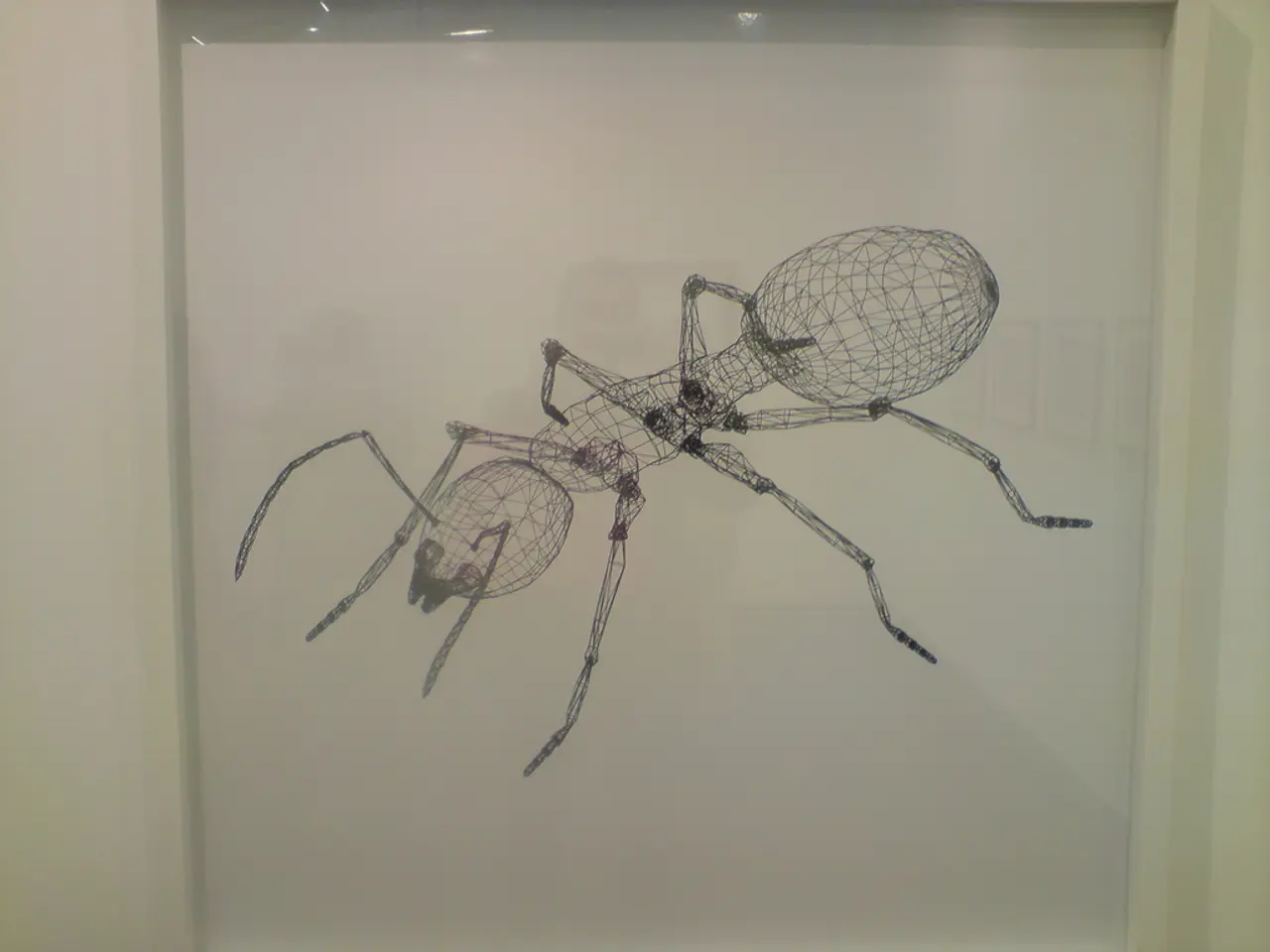Ant colonies defy traditional human teamwork principles, display superior performance when working as a team according to research
In a remarkable display of collective effort, weaver ants have been found to utilise a unique "force ratchet" system, amplifying their pulling force through long chains of ants. This discovery, published in the journal Current Biology, challenges the traditional understanding of team dynamics and could inspire the next generation of robot teamwork.
The study, led by behavioural ecologist Madelyne Stewardson from Macquarie University, reveals that weaver ants live in trees across tropical Africa, Asia, and Australia. These ants have developed an intricate system of labour division, with each ant contributing more rather than less as the group grows, defying the typical drop in performance seen in humans.
Weaver ants split their work into two main roles: active pullers and anchors. Ants at the front and middle of the chain actively pull, generating a forward force. This is crucial for moving objects, such as leaves, towards their nest. On the other hand, ants at the back of the chain stretch out their bodies and use their legs as anchors. This action resists the counterpressure of the leaf pulling back, effectively storing the pulling force within the chain.
As the chain lengthens, more ants contribute to the pulling force, allowing the team to increase its overall pulling capacity. Longer chains have a greater grip on the ground due to the increased number of feet, which enhances traction and reduces slippage.
The "force ratchet" effect allows longer ant chains to outperform smaller ones. This mechanism allows weaver ants to work more efficiently as a team than individual ants, avoiding the Ringelmann effect where team performance decreases with increasing team size. Instead, they achieve superefficiency by doubling the average force contribution per individual as the team grows larger.
This research was conducted by an international team of researchers, including those from Macquarie University. The team measured the force that ant teams could apply, using an artificial leaf attached to a force meter. The results showed that the force produced by the ant team is significantly greater than the force produced by a single ant.
The problem of decreasing individual effort in human groups as more members join, known as the Ringelmann effect, was first identified in 1913 by French engineer Max Ringelmann. The study on weaver ants contradicts this effect, demonstrating a remarkable example of cooperation in the natural world.
The method used by weaver ants could inspire the design of future robot teams, where each robot could take on a specific role, much like the active pullers and anchors in the ant colony. This research opens up exciting possibilities for the development of more efficient and effective robot teams.
[1] Stewardson, M. et al. (2022). Weaver ants amplify pulling force through a force ratchet mechanism. Current Biology. [2] Stewardson, M. (2022). Interview with Madelyne Stewardson on weaver ants and their force ratchet system. The Conversation. [4] Stewardson, M. et al. (2022). Weaver ants defy the Ringelmann effect: each ant increases its contribution as the group grows. Nature.
- This fascinating discovery of weaver ants' force ratchet mechanism, published in Current Biology, not only challenges our understanding of traditional team dynamics but also offers potential inspiration for the next generation of robot teamwork in the realm of science and technology.
- The innovation in weaver ants' cooperative behavior, as observed by Stewardson's team, could revolutionize how scientists design future robot teams, with each 'robot ant' assuming a specific role akin to the active pullers and anchors in the natural ant colony, enhancing the overall efficiency and effectiveness of the team.




